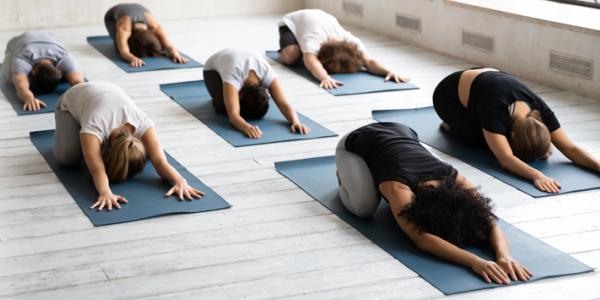
You know the benefits of exercise, and you know the benefits of meditation. But can you get even more benefits by combining the two practices into one?
If you're still struggling to find time in your busy day to practice meditation and clear your head, we've got some good news: many people – including doctors and athletes – believe that by incorporating meditation into a workout routine, you can enhance the benefits of both!
Meditation's focus on mindfulness puts emphasis on breathing and body shifts, rather than the eventual outcome of your exercise. This in turn can allow you to experience each movement more fully, and make exercise or activity more enjoyable. The rewards of incorporating mindfulness into your exercise routine include better mental focus and reduced stress. In fact, recent studies have shown that in as little as eight weeks, movement-based forms of meditation such as yoga can produce structural changes in the areas of the brain associated with both focus and stress.
Restorative yoga - a type of yoga that emphasizes physical, mental, and emotional relaxation during movement - is an ideal way to explore the benefits of exercise as meditation. This particular yoga practice helps activate the parasympathetic nervous system, or the part of your nervous system that helps your body keep basic functions working smoothly. Unlike other more active styles of yoga, restorative yoga incorporates just a few poses in one session, with each one being held for several minutes. Practicing at this slow pace keeps you in the moment and focused on stillness and deep breathing, which are both intensely relaxing. And, because you are able to hold poses for long periods of time without discomfort, restorative yoga is both gentle on your body and very effective at helping manage chronic pain. More good news: restorative yoga poses are adaptable for most every situation and physical limitation, and are easy to do anytime, anywhere with just a few simple items such as a blanket or bolster. Ready to give it a try? These poses are a good place to start.
Of course, there are other ways besides yoga to incorporate meditation into your exercise routines. Walking meditation is perhaps one of the simplest and most accessible practices that's appropriate for just about anyone of any age. Walking labyrinths – pathways that wind in a continuous circuitous pattern from an outer edge to the center - are used at health retreats and spas world-wide to help reduce stress and anxiety and enhance creativity, balance and well-being. But if you don't have a walking labyrinth nearby, you can achieve similar effects by finding your own quiet and narrow pathway and counting your steps as you go. Just focus on each step and your breathing as you go, which will help keep your mind focused and eliminate distractions. Learn more about walking meditations.
Another way to get started is with a meditation app that focuses on walking. There are a multitude of meditation apps available, and many are either designed specifically for meditation while exercising or have a component that focuses on that. Some apps are free, and others charge a monthly or annual subscription fee. However, most will allow you to try the app for free for a few days to see if it's right for you. It may take a little research to find one that works for you, but you might also be surprised at just how effective it can be in helping you achieve the benefits of both exercise and meditation in one enjoyable session!
This article first appeared in the January 2023 edition of the HealthPerks newsletter.

